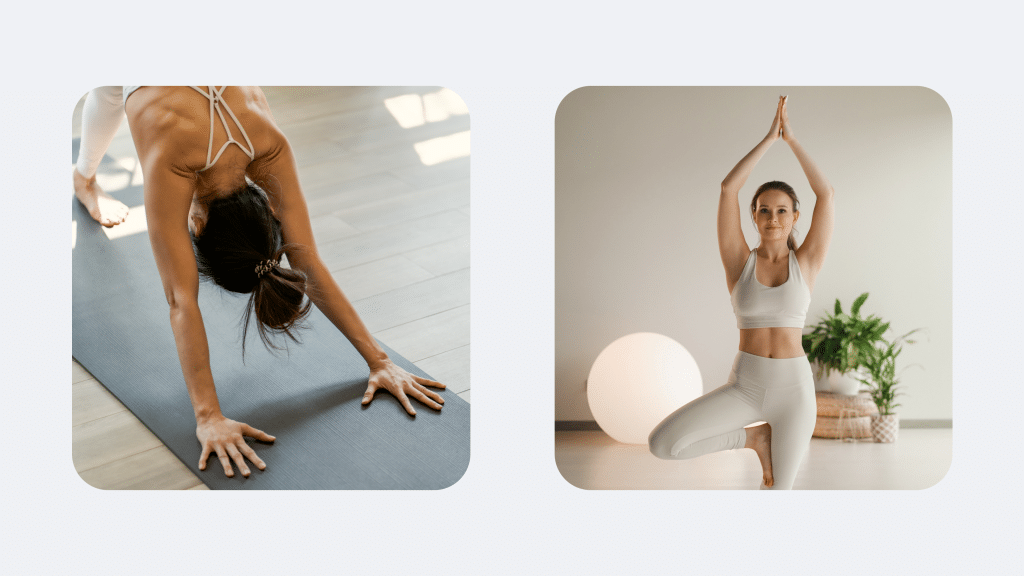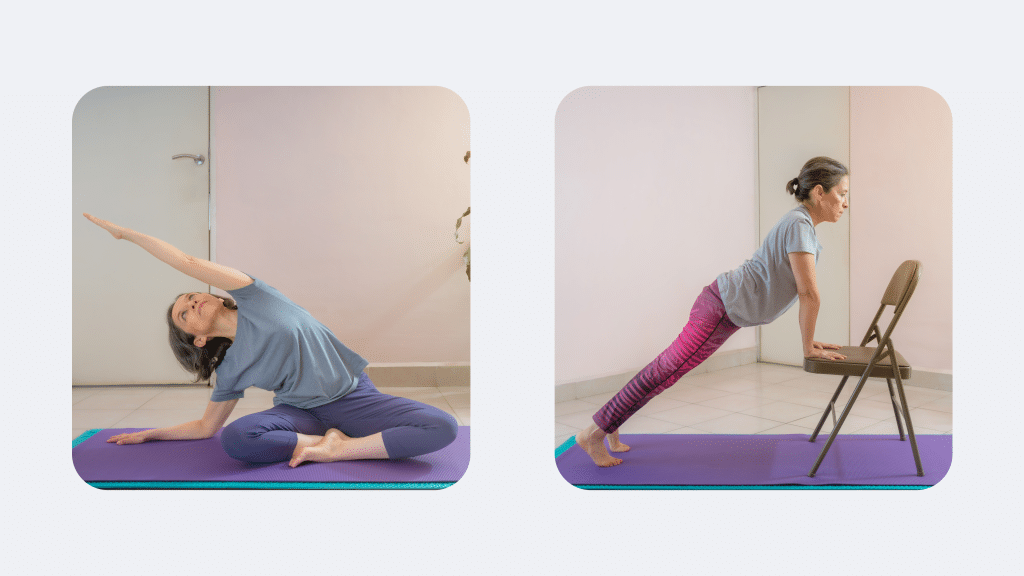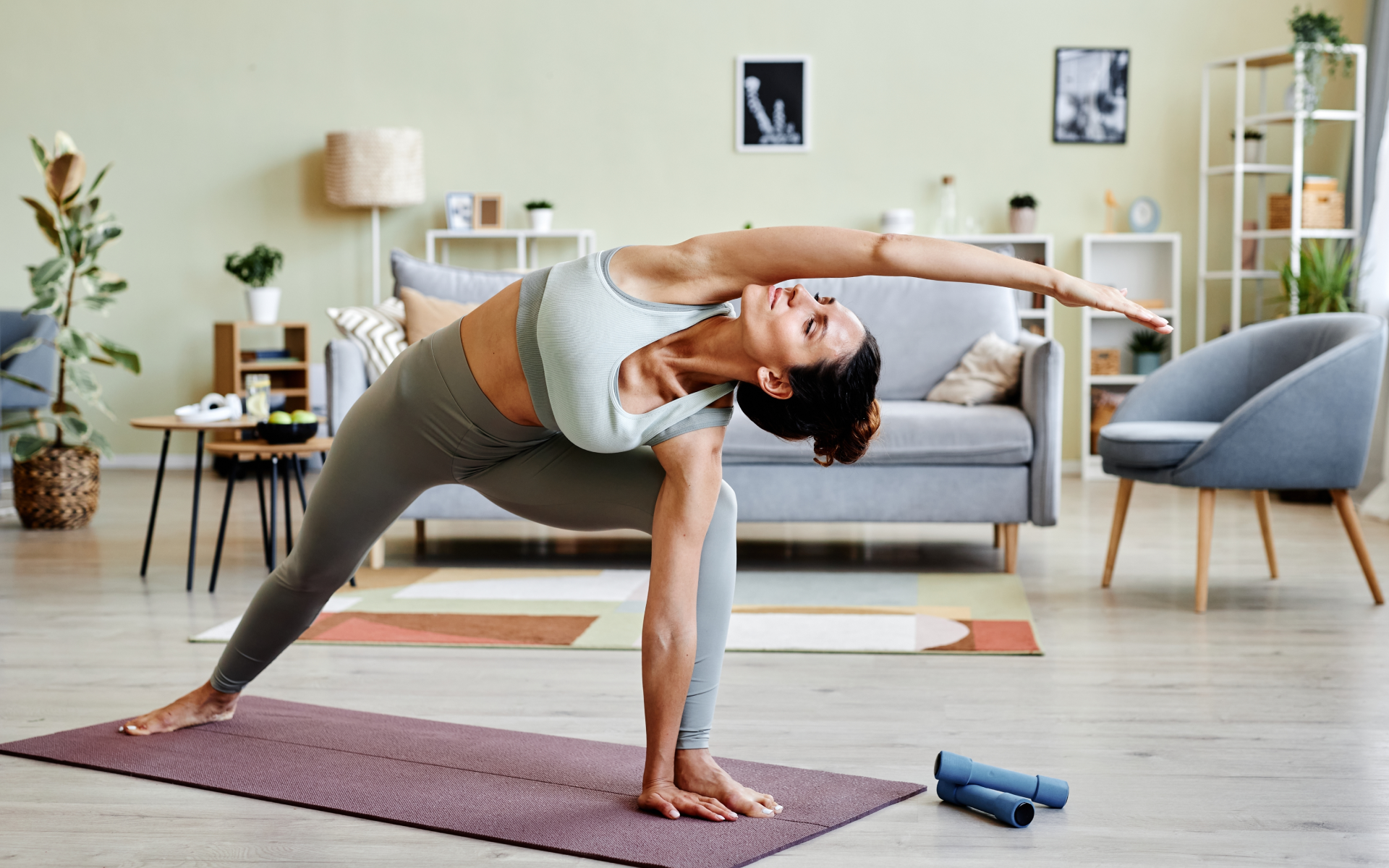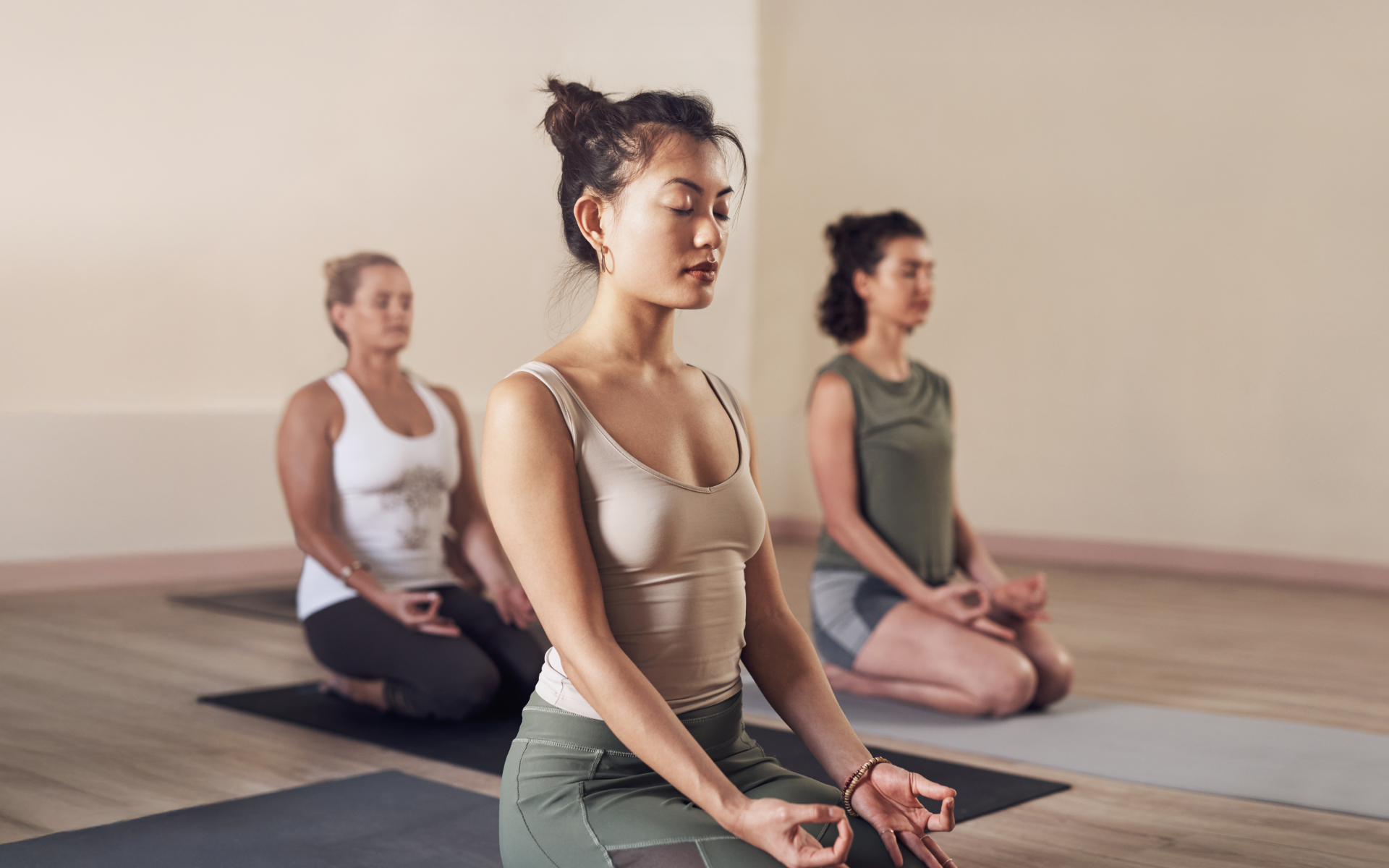Are you looking for effective ways to de-stress and relax in your daily life? Look no further than somatic movement exercises, a holistic approach that combines gentle, mindful movements that aim to improve body awareness. Somatic movement exercises are specifically designed to help you release tension and calm your mind, which makes them a powerful tool to de-stress.
Imagine being able to tune into your body’s sensations, creating a deeper connection between your mind and body. Picture yourself gently stretching and moving, feeling each muscle as you go, and breathing deeply to soothe your nervous system. This is the essence of somatic movement. By incorporating these simple, intentional movements into your daily routine, you can improve your physical and mental well-being. Regular practice of these exercises can lead to improvements in your quality of life, including reduced anxiety and stress (1, 2).
This article will guide you through the various aspects of somatic movement exercises, from understanding its principles to exploring the benefits of somatic movement exercises, uncovering the science behind their effectiveness, and providing practical tips for incorporating them into your life. Whether you’re a beginner in the field of somatics or looking for exercises to support your well-being, you’ll find valuable insights and guidance to help you on your journey to relaxation and stress relief.
Understanding Somatic Movement
What Is Somatic Movement?
Somatic movement focuses on the internal experience of movement rather than external performance. Unlike traditional exercise routines that emphasize achieving certain physical goals or aesthetics, somatic movement is about how the movements feel from within. By paying close attention to your body’s sensations, you can start to notice patterns of tension and stress. This awareness is the first step in releasing these patterns and finding more ease and fluidity in your movements.
Somatic movement exercises improve interoception (the sense of the internal state of your body), which helps you understand and respond to your physical and emotional needs more effectively (3), and proprioception (your body’s ability to sense its position and movement in space), which is essential for balance and coordination (4). This internal awareness allows you to develop a deeper connection with your body and mind, promoting overall well-being and deep relaxation.
The Science Behind Somatic Movement
Have you ever wondered why somatic exercises make you feel so good? It’s not just a temporary boost; there’s substantial evidence that shows how they can positively impact your brain and nervous system, promoting relaxation, reducing stress, and improving overall health (2, 5, 6). Understanding this can really help you appreciate its benefits and may even motivate you to make it a part of your daily routine.
Neurological and Physiological Mechanisms
The Polyvagal Theory and the Autonomic Nervous System
Dr. Stephen Porges’ polyvagal theory gives us a detailed look at how somatic movement affects the autonomic nervous system (ANS) (7). The ANS controls involuntary functions and is divided into the sympathetic nervous system (SNS) and the parasympathetic nervous system (PNS).
- Neuroplasticity and Brain Function – Somatic movement practices encourage the development of new neural pathways, a phenomenon that is known as neuroplasticity (8). When you engage in mindful movement, your brain forms and strengthens connections that enhance your motor skills and coordination. This process improves physical function and supports cognitive health, potentially protecting against age-related decline. Furthermore, this mindful engagement required in somatic movement exercises stimulates areas of the brain involved in movement control and emotional regulation. This holistic activation can lead to enhanced cognitive function and mental clarity.
- Activation of the Parasympathetic Nervous System – One of the key mechanisms through which somatic movement promotes relaxation is by activating the PNS (9, 10). The PNS is responsible for the “rest and digest” response, which counteracts the “fight or flight” response of the SNS. By shifting your body into a state of relaxation, somatic movement helps lower your heart rate, reduce your blood pressure, and decrease your levels of anxiety and stress hormones such as cortisol (11, 12). Somatic exercises encourage self-regulation of the nervous system (10). By practicing mindful movements and controlled breathing, you learn to engage the PNS more effectively, which helps facilitate a state of calm and relaxation. This self-regulation is essential for managing stress and maintaining overall well-being.
- Improved Emotional Regulation – Regular practice of somatic movement can enhance your ability to manage emotions. By creating a mindful awareness of your bodily sensations, you can better recognize and respond to emotional cues. This heightened awareness can lead to improved mood, reduced anxiety, and greater resilience in the face of stress (13). The polyvagal theory suggests that by engaging the vagus nerve through practices such as deep breathing and mindful movement, you can influence your emotional state (14). This can lead to a greater sense of safety and connection, both with yourself and others.
Read More: Somatic Yoga for Weight Loss: A Guide for Beginners
Benefits of Somatic Movement Exercises
Physiological Benefits of Somatic Movement Exercises
- Muscle Relaxation and Pain Reduction: Somatic movement techniques, such as progressive muscle relaxation, help alleviate muscle tension and reduce chronic pain (15).
- Enhanced Flexibility and Mobility: Gentle, mindful movements encourage the release of fascia, the connective tissue that surrounds muscles and organs. This can lead to increased flexibility, improved joint mobility, and a greater range of motion.
- Postural Alignment and Balance: By paying close attention to your body’s sensations and movements, you can improve your posture and alignment. Somatic exercises such as the Alexander Technique help correct imbalances and asymmetries in the body, which leads to better balance and coordination (16). This can reduce the likelihood of falls and other injuries, particularly as you age.
Psychological Benefits of Somatic Movement Exercises
- Stress Reduction and Mental Clarity: The mindful nature of somatic movement helps quiet the mind and reduce stress and anxiety. Practices such as body scan meditation and controlled breathing techniques encourage a state of mental clarity and focus, which allows you to let go of worries and distractions (17, 18).
2. Mind-Body Connection: Somatic movement creates a deeper connection between your mind and body. This integrated awareness can enhance your sense of self and promote a greater appreciation for your body’s capabilities. A strong mind-body connection is associated with improved psychological well-being and a more positive outlook on life.
Key Somatic Exercises for Relaxation
Breathing Exercises
Deep Diaphragmatic Breathing
This technique involves breathing deeply into the diaphragm, promoting relaxation and reducing stress.
- Find a Comfortable Position: Sit or lie down in a relaxed position. Close your eyes or maintain a soft gaze.
- Place Your Hands: Put one hand on your chest and the other on your abdomen.
- Inhale Deeply: Breathe in slowly through your nose, ensuring your diaphragm (not your chest) inflates with enough air to create a stretch in your lungs.
- Exhale Slowly: Exhale gently through your mouth, allowing your abdomen to fall naturally.
- Repeat: Continue this breathing pattern for a few minutes, focusing on the rise and fall of your abdomen.
4-7-8 Breathing Technique
A simple yet powerful technique that involves inhaling for 4 seconds, holding for 7 seconds, and exhaling for 8 seconds to calm the nervous system.
- Get Comfortable: Sit or lie down in a comfortable position. Close your eyes or maintain a soft gaze.
- Inhale: Close your eyes and breathe in quietly through your nose for 4 seconds.
- Hold: Hold your breath for 7 seconds.
- Exhale: Exhale completely through your mouth for 8 seconds, making a whooshing sound.
- Repeat: Repeat this cycle up to four times, gradually increasing the number of cycles as you become more comfortable with the technique.
Gentle Stretching Exercises
Cat-Cow Stretch
A gentle pose that increases flexibility and relieves tension in the spine.
- Start on All Fours: Position yourself on your hands and knees, with your wrists under your shoulders and your knees under your hips.
- Arch Your Back (Cow Pose): Inhale and lift your head and tailbone toward the ceiling, allowing your belly to sink toward the floor.
- Round Your Back (Cat Pose): Exhale and tuck your chin to your chest, rounding your spine toward the ceiling.
- Repeat: Flow between these two poses, synchronizing with your breath for several rounds.
Pelvic Tilts
This exercise helps mobilize the lower back and reduce tension in the pelvic region.
- Lie Down: Lie on your back with your knees bent and your feet flat on the floor, hip-width apart.
- Inhale: Inhale and gently arch your lower back, creating a small space between your back and the floor.
- Exhale: Exhale and tilt your pelvis toward your ribs, pressing your lower back into the floor.
- Repeat: Continue this movement, slowly and smoothly, for several repetitions.
Mindful Movement Techniques
Body Scan Meditation:
A mindfulness practice that involves paying attention to sensations in different parts of the body, promoting relaxation and body awareness.
- Focus on Your Breath: Close your eyes and take a few deep breaths to settle in. Pay attention to your breathing, noticing the rise and fall of your chest.
- Scan Your Body: Start at your toes and slowly move up through your body, paying attention to any sensations, tension, or discomfort.
- Acknowledge Sensations: Without judgment, simply notice each sensation and then move on to the next part of your body.
- Finish: Once you’ve reached the top of your head, take a few deep breaths and slowly open your eyes.
Read More: List of Somatic Exercises for Mental and Physical Well-Being
Progressive Muscle Relaxation
This technique involves sequentially tensing and relaxing different muscle groups to achieve deep relaxation.
- Get Comfortable: Sit or lie down in a comfortable position in a quiet place. Close your eyes or maintain a soft gaze. Take a few deep breaths.
- Tense Muscle Groups: Start with your toes, tensing the muscles for approximately 5-10 seconds.
- Release: Gradually release the tension and notice the sensation of relaxation.
- Move Up: Continue this process, moving up through each muscle group (feet, calves, thighs, abdomen, chest, arms, hands, neck, and face).
- Complete: After tensing and relaxing each muscle group, take a few deep breaths and enjoy the overall sensation of relaxation.
Integrating Somatic Movement into Your Daily Routine
Tips for Beginners
It’s essential for beginners to start small with somatic exercises. Begin with short sessions, approximately 5-10 minutes, and gradually increase the duration as you become more comfortable. Focus on gentle, mindful movements rather than pushing yourself too hard, and always listen to your body’s signals—if you feel pain or discomfort, modify the movement or take a break. Consistency is key, so aim to practice regularly, even if it’s just a few minutes each day.
Creating a Somatic Movement Routine
When creating a somatic movement routine, you need to incorporate a variety of exercises to keep things engaging. Set aside a specific time each day for your practice, and create a relaxing and safe environment. Clear, achievable goals, such as reducing stress or improving flexibility, can help keep you motivated. Track your progress in a journal to note improvements and any challenges you encounter. Remember, somatic movement is a journey, so be patient with yourself and enjoy the process of learning and improving.
Common Mistakes and How to Avoid Them
Overexertion
A common mistake is overexertion – avoid overexertion by not pushing yourself too hard. Somatic movement should be gentle and mindful, focusing on listening to your body’s signals. Overexertion can lead to injury and burnout, which can hinder your progress and enjoyment. Instead, prioritize quality over quantity, ensuring each movement is done with awareness and care.
Lack of Consistency
Another common mistake is lack of consistency – consistency is essential for reaping the long-term benefits of somatic exercises. Regular practice helps build and maintain the neural pathways and muscle memory necessary for improvement. Set a specific schedule for your practice, whether daily or a few times a week, and make sure you stick to it. This regularity will help integrate the exercises into your routine, making them a natural part of your day and ensuring continuous progress.
FAQs
Can anyone do somatic movement exercises?
Yes, somatic movement exercises are suitable for people of all ages and fitness levels. These exercises are designed to be gentle and mindful, focusing on improving body awareness and relieving tension. Even those with physical limitations or chronic pain can benefit from somatic exercises, as they can be modified to accommodate different levels of mobility and comfort. Consult a somatic therapist/practitioner for more guidance.
How often should I practice these exercises?
For optimal benefits, you should aim to practice somatic movement exercises several times a week. Regular practice helps reinforce the connection between your mind and body, enhancing relaxation, reducing stress, and improving overall physical and mental well-being. Ideally, try to integrate somatic exercises into your daily routine, even if it’s just for a few minutes each day.
Are there any risks involved?
Somatic movement exercises are generally safe, but it’s important to listen to your body and avoid any movements that cause you pain. Overexertion and forcing movements can lead to discomfort or injury, so focus on gentle, mindful practices. If you have any pre-existing medical conditions or concerns, it’s always a good idea to consult a healthcare professional before you start any new exercise routine. Paying attention to your body’s signals and practicing within your comfort zone will help ensure a safe and beneficial experience.
What should I wear during these exercises?
Wear comfortable, loose-fitting clothing that allows for a full range of motion. Clothing that’s too tight or restrictive can hinder your ability to move freely and comfortably, which is essential for somatic exercises. The goal is to feel unrestricted and at ease, enabling you to fully focus on the movements and sensations of your body.
The Bottom Line
By incorporating somatic movement exercises into your daily routine, you can unlock the potential for deep relaxation, reduced stress, and improved physical and mental well-being. Start your journey today and experience the transformative power of mindful, body-centered practices.
DISCLAIMER:
This article is intended for general informational purposes only and does not serve to address individual circumstances. It is not a substitute for professional advice or help and should not be relied on for making any kind of decision-making. Any action taken as a direct or indirect result of the information in this article is entirely at your own risk and is your sole responsibility.
BetterMe, its content staff, and its medical advisors accept no responsibility for inaccuracies, errors, misstatements, inconsistencies, or omissions and specifically disclaim any liability, loss or risk, personal, professional or otherwise, which may be incurred as a consequence, directly or indirectly, of the use and/or application of any content.
You should always seek the advice of your physician or other qualified health provider with any questions you may have regarding a medical condition or your specific situation. Never disregard professional medical advice or delay seeking it because of BetterMe content. If you suspect or think you may have a medical emergency, call your doctor.
SOURCES:
1) The Effect of Somatic Awareness Exercise on the Chronic Physical Manifestations of the Stress Response (2012, proquest.com)
2) The Somatic Therapy Workbook ( 2020, books.google.co.in)
3) Interoception and Emotion: A Potential Mechanism for Intervention With Manual Treatment (2021, ncbi.nlm.nih.gov)
4) Conscious Use of the Human Body in Movement: The Peripheral Neuroanatomic Basis of the Alexander Technique (1996, jstor.org)
5) Patterning of Cognitive and Somatic Processes in the Self-Regulation of Anxiety (1984, taylorfrancis.com)
6) Breathwork Interventions for Adults with Clinically Diagnosed Anxiety Disorders ( 2023, mdpi.com)
7) The Pocket Guide to the Polyvagal Theory (2018, somaticpsychotherapytoday.com)
8) What is Neuroplasticity? (n.d.; totalsomatics.com)
9) Sympathetic holding and parasympathetic release: Vagal tone and beta, alpha and theta in bio-somatic dance movement naturotherapy (2020, intellectdiscover.com)
10) Self-regulation, co-regulation and cardio-ception: Parasympathetic ease-and-release in Somatic Movement Dance Therapy (2021, intellectdiscover.com)
11) Anxiety and Somatic Dance (2022, liebertpub.com)
12) Special Issue on Holotropic Breathwork and Other Hyperventilation Procedures (2014, researchgate.net)
13) Effects of conscious connected breathing on cortical brain activity, mood and state of consciousness in healthy adults (2023, link.springer.com)
14) Unraveling the Polyvagal Theory (n.d.; therapycharlotte.com)
15) Progressive Muscle Relaxation (2008, tandfonline.com)
16) Randomized controlled trial of the Alexander Technique for idiopathic Parkinson’s disease (2022, journals.sagepub.com)
17) Effects of an 8-Week Body Scan Intervention on Individually Perceived Psychological Stress and Related Steroid Hormones in Hair (2019, link.springer.com)
18) The effects of body scan meditation: A systematic review and meta-analysis (2022, iaap-journals.onlinelibrary.wiley.com)











